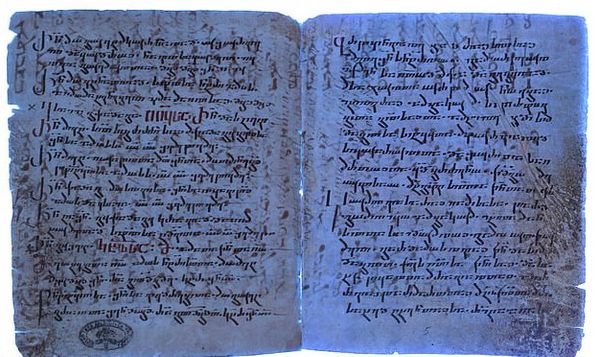
Have you ever thought about how the Bible was written and by whom? Well, a groundbreaking discovery has just been made that could shed new light on these questions. A hidden chapter of the Bible, written over 1500 years ago, has been uncovered. This chapter predates the birth of Jesus Christ by more than 500 years, and experts from various religious backgrounds believe that it could change everything we know about the world.
The newly discovered text is a fragmentary part of Matthew 11-12, written in the ancient Syriac language. This language gives it an even older history than the standard Gospel text known to scholars today. The exciting part is that this chapter was found using a modern UV light device, applied to an ancient manuscript stored in the Vatican Library for centuries.
You see, the original text had been scraped off the parchment so that a new text could be written over it. However, traces of the original remained and were detectable with the help of this scientific UV light. Dr. Garrick Allen from the University of Glasgow, a senior lecturer in New Testament studies, is one of the scientists leading this remarkable discovery.
While this finding is not groundbreaking on its own because it is only a fragment of Matthew 11-12, it plays a crucial role in understanding the earliest translations of the Bible. The Syriac translation is significant as one of the earliest translations from Greek. It provides insight into the early stages of the Bible’s text and the communities that produced these translations.
Christian believers are fascinated by the news that a new fragment of the Bible has been discovered after all these years. Justin Brierley, an author, expressed his excitement about this revelation. He believes that this discovery demonstrates just how rich the manuscript tradition of the New Testament is across many centuries. Brierley also finds it fascinating to compare the wording of Matthew’s gospel in this newly discovered fragment to the versions we are familiar with. This kind of textual criticism, along with discoveries like this, helps historians create an accurate picture of the original gospels.
In conclusion, this remarkable discovery offers us a glimpse into the early stages of the Bible’s translation and the communities behind it. While it may not change everything on its own, it is an important piece of the puzzle. The varying wording of the gospel in this fragment challenges critics who doubt the integrity of the Bible over time. Thanks to the science of textual criticism and breakthroughs like this, we can appreciate the accuracy and richness of the Bible’s manuscript tradition.





